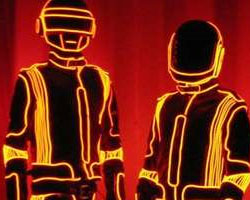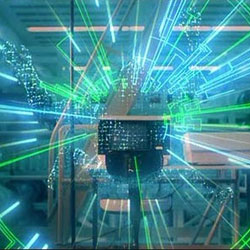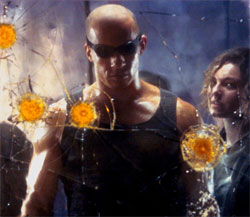MacBook Pro 17-inch unibody review

There's no point in going as in-depth on this model of MacBook Pro as we did on the 15-inch version. In terms of hardware, build quality, and general patchwork inside, this is the same computer (albeit somewhat more gigantic). The same unibody construction is used here, and Apple calls the laptop the "world's thinnest and lightest 17-inch notebook." We won't argue -- it compares favorably to the smaller entry in the family, and besides it's obviously larger footprint, we didn't feel it was excessively heavy for a device of this size (it actually weighs 6.6 pounds, just a little over a pound heavier than the 15-inch version).

All of the other details, like the glass trackpad and new keyboards are completely intact. Actually, if you saw one of these from a distance, it might not be immediately obvious that it was the 17-incher (save for how tiny the human using it would look in comparison).
Hardware
The version we received was the fully kitted out iteration of the laptop. The base configuration (a not-super-cheap $2,799) is outfitted with a 2.66GHz CPU, 4GB of RAM, a 320GB hard drive, and the switchable NVIDIA GeForce 9400M / 9600M GT GPUs. The version we have came fully loaded with a 2.93GHz CPU, 8GB of RAM, a 256GB SSD, and (yes) an anti-glare display. Needless to say, performance wasn't much of an issue -- but the final cost ($4,899) might be a little extreme for most.
In terms of day to day tasks, this computer is simply overkill. If you're working on even somewhat graphically intensive projects, you can probably get by just fine with one of the smaller models. It's not as if the GPU is more super-charged than any other system in the line. The real advantage here is the massive screen real estate, matte display, and the supposedly gargantuan battery life. The 17-inchers do seem suited to those working in the video or photography fields, and Apple clearly isn't too interested in trying to shill these to the mainstream. The company is actually touting features like a 60 percent greater color gamut in the display panel (which incidentally is the same in both the gloss and non-gloss versions).


Performance on our system was insanely fast, though. From cold boot to active desktop took roughly 30 seconds, which is blazing (at least to us). Jumping from app to app, dealing with huge images / editing, multiple tabs of CPU intensive websites, and having scores of projects open at once didn't faze the Pro. The biggest performance gains were in disk access, and obviously the SSD is a major player here, but even general UI elements seemed snappier and more responsive than on our other computers. Of course, none of that should come as a surprise, this is -- after all -- Apple's top of the line laptop.
So let's talk about that display for a moment. Our biggest gripe about the other new unibody Macs was the lack of a matte option for the screens. In our review, we noted that the glare on the new LED displays is so intense that it's actually quite distracting in anything other than a lowly lit room. Apple chose to solve the problem on the bigger versions by introducing an anti-glare option (for an additional $50, of course). Interestingly, the company prefers the term "anti-glare" to "matte," which is odd, since "anti-glare" quite obviously suggests the other option is, well... "glare."

MacBook Pro 15-inch vs. MacBook Pro 17-inch
Regardless, the new display is stunning. Not only is the thing massive in terms of resolution (going back to the 15-incher made us feel like we were working on an OLPC XO), but the color depth and contrast are stunning. Apple seems to have really honed the art of light sensing, and we found the display accurately adjusting itself to a room's light. When cranked up to full brightness, the screen beams -- it's crisp, clear, and colors pop. We're not designers, and we're not professional photographers, but as far as we can tell, this display would be pure win for folks in those lines of work.

As you likely know, the battery in the 17-incher is the non-removable type, much like the MacBook Air... with one major difference. Phil Schiller went on and on at Macworld this year about the lengths the company went to in developing a battery which is not only built into the system, but extends life far beyond that of a typical unit. The result was a The claim from Apple is that the 40 percent larger, lithium-polymer-based bricks they came up with can provide up to eight (yes, 8) hours of use on a single full charge, and can be re-juiced 1000 times before needing to be replaced. Once you need said replacement, the packs can be swapped out by Apple for a low, low fee of $179.
So, the claim: up to eight hours with the on-board graphics, and seven hours with the discrete GPU switched on -- how did they fare?

In our tests, under normal use (image editing, heavy web surfing, blogging all over the internet, YouTube / Viddler video watching, really serious AIM sessions), the laptop nabbed an average of 4:40 on a single charge with the low-power GPU, and, surprisingly, just under four hours (about 3:50) with the discrete chip. Those numbers fall right in line with other reviews we've seen of the laptop, and our feeling was that they're fairly consistent across the board. So, we're dealing almost four hours discrepancy with what Apple claims -- but what does that mean? According to the company, they tested a 2.66GHz model with the screen at half brightness while browsing the web over WiFi and editing a text document to achieve that eight hour number. We put the system to a more average and complete test, and frankly, we're impressed with the results. The new battery bests the typical lifespan of a MacBook Pro removable by almost double. Having seen what it's capable of, we could get comfortable with Apple adding batteries of this variety into other new laptops they produce, but let's revisit this again in a year or two -- we still have no idea what the long term experience would be like with one of these. Will it live up to the promise of a 1000 charges? We have our doubts.
Still, if we had to choose a swappable scenario over this, it would be hard to choose. From experience, being able to quickly swap to a new battery is a huge benefit when you're on the move and don't have a second to recharge. On the other hand, the huge stretches of time between charges we saw on the new 17-incher are extremely encouraging, and likely long enough to make the system viable for field use.
Wrap up
Ultimately, the decision about whether to buy the bigger MacBook Pro is probably already made -- if you're a power user who needs the real estate, there's little to deter you from making this purchase. Apple has cleaned up the design in all the right ways, improved the display and guts considerably, and proved that it can milk a substantial amount of time from a non-removable battery. The cost may still be a major barrier here for most, but something tells us if you really need a computer of this size, you'll find a way to pay for it. Our actual gripe comes not in the form of problems with this particular system, but in Apple's methodology of rolling out options for their laptops. Unlike competitors such as Dell, if you want a 15-inch Apple laptop, you're stuck with one type of display (the same resolution and same obnoxious glossy finish), and your options for other components aren't much better. Apple: you've proven that you can turn in a beautiful, clear LED display without resorting to the reflective sheen of the current models -- why not extend that kindness to the rest of your users?










 20th Century Fox has debuted the final trailer for
20th Century Fox has debuted the final trailer for 








 Disney’s been pretty vague when it comes to talking about what their new Tron sequel will be about. But today
Disney’s been pretty vague when it comes to talking about what their new Tron sequel will be about. But today 






